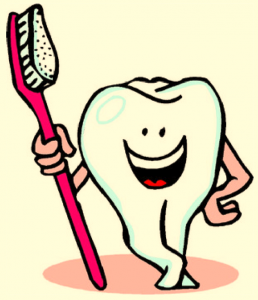 Choosing the Right Tools for Your Teeth and Gums
Choosing the Right Tools for Your Teeth and Gums
The best way to prevent periodontal diseases and keep your teeth for a lifetime is through brushing, flossing, and regular dental visits that include a periodontal evaluation. However, with so many products filling up the oral hygiene aisle, it is hard to know which option is right for you.
A common option is the manual toothbrush; a small brush with a long handle that is used to clean the surfaces of your teeth. If you use a manual toothbrush, select one with soft bristles that allows you to reach every surface of each tooth.
If you are looking for a different option than the manual toothbrush, the electric toothbrush can be a good alternative. An electric toothbrush is also a small brush on a handle but with electric power moving the brush head. Electric toothbrushes allow the user to simply place the bristles on the tooth while the vibrations do the cleaning.
So which brush should you choose? Every person is different, so before making your choice, talk to your dental professional about which option is right for you.
Whatever brush you use, follow these tips:
DO:
- Use a minimum amount of toothpaste. Too much toothpaste means that you have to tighten the cheeks and lips to accommodate the extra toothpaste material. This excess can prevent you from getting to the back teeth to brush properly.
- Allow the brush to air-dry after each use. The most harmful bacteria will die when exposed to oxygen.
- Replace your toothbrush every 2-3 months or if the bristles on your toothbrush are bent or frayed. A worn-out tooth brush will not clean your teeth properly. Also replace the brush if you recently had a cold or flu. This will prevent reinfection.
DO NOT:
- Share your toothbrush. According to the Centers for Disease Control (CDC), the exchange of body fluids from sharing toothbrushes could increase the risk for infection.
- Apply too much pressure as this can lead to gum recession and erosion of tooth enamel.
- Routinely cover your toothbrush or store it in a container.
- Touch the toothpaste tube to your toothbrush.
And of course, don’t forget to floss ‘em! Research published in the Journal of Periodontology found that tongue and tooth brushing in combination with dental flossing significantly decreased gingival bleeding by 38 percent after a two-week oral hygiene program. There’s no clear answer on whether it’s better to floss first then brush or brush then floss. Flossing first may loosen plaque, which can then be brushed away with your toothbrush.
Leave it to the Pros
Daily brushing and flossing will keep the formation of dental plaque to a minimum, but it won’t completely prevent it. A professional cleaning will remove hardened calculus in places your toothbrush and floss have missed. In addition, your dental professional should be able to tell you your “probing depths.” A healthy probing depth of one to two millimeters with no bleeding represents a healthy mouth. Probing depths of three to four that bleed generally need more than a simple cleaning. They may require a procedure called scaling and root planing. When probing depths reach five millimeters or greater you may require surgical treatment to restore lost bone. Keep this pocket size guide to oral health in mind and be sure not to skip your next appointment!
